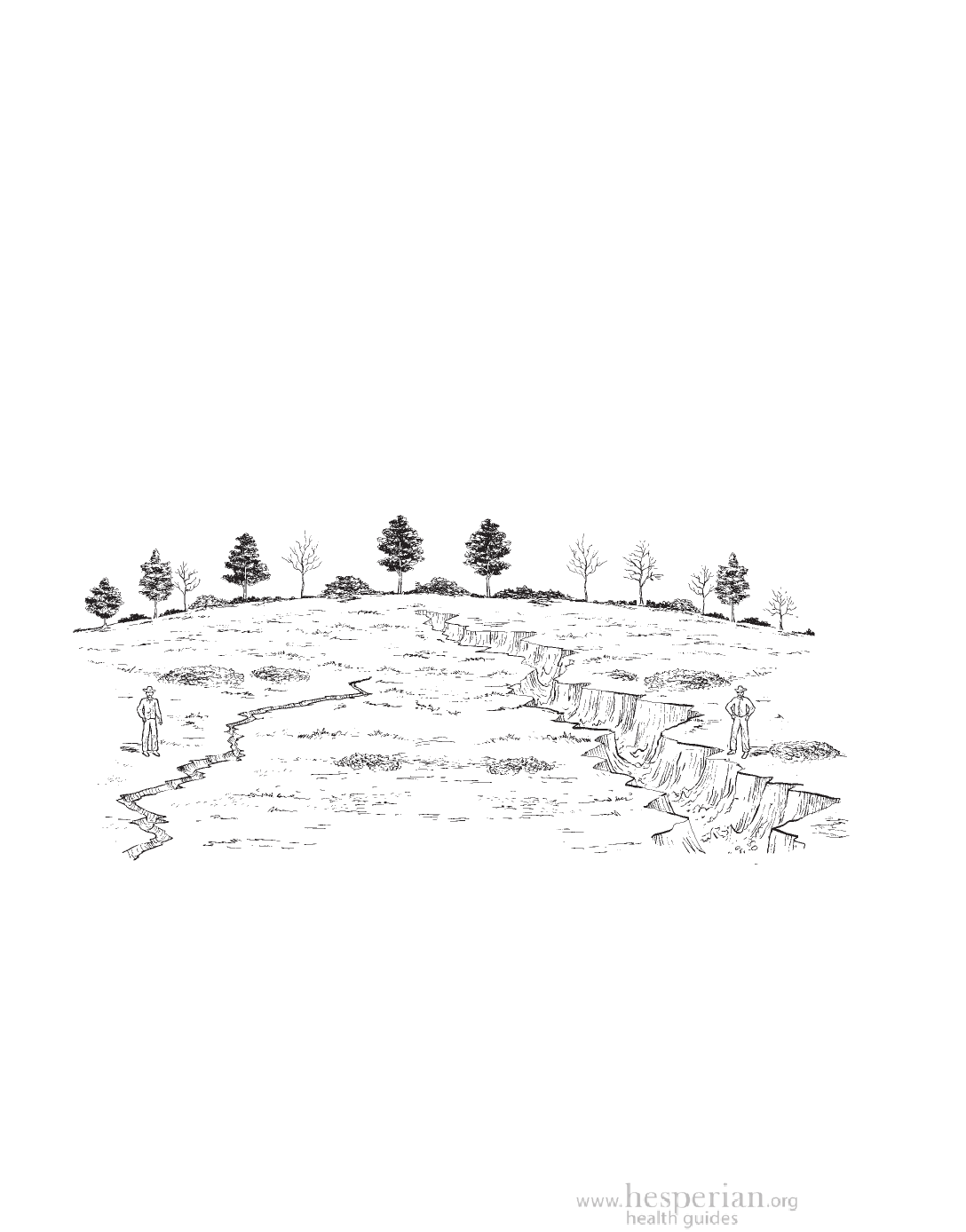
2 00 R e s to r i n g L a n d a n d Pl a n t i n g Tr ee s
Preventing Erosion
Loss of soil, or erosion, is caused by wind and water wearing away the soil
and carrying it off. Protecting soil from erosion, especially on steep hillsides,
improves the land’s ability to grow crops, protects water sources downhill,
and prevents landslides. Farmers follow 3 principles to prevent erosion and
surface water runoff:
1. Slow the water by creating natural barriers from the top of the watershed
down.
2. Spread the water by creating channels to divide it and direct where it flows.
3. Sink the water by improving the soil so it allows the water to filter into the
ground.
The signs of erosion are sometimes difficult to recognize. They include crops
that do not produce as much as they used to, rivers that are muddier than they
used to be (especially after storms), and soil that has grown thin.
This erosion gully is just forming...
... but before long, it will look like this.
Where erosion has not begun, it can be prevented by keeping as many plants
and trees as possible, and by directing surface runoff water into ditches, ponds,
and natural waterways. Where erosion is already severe, it is still possible to
stop it and to restore healthy soils. Even placing a line of rocks or building a low
stone wall across the slope of the land can prevent soils from washing downhill,
and create fertile places for trees and plants. Sustainable farming methods such
as green manures, crop rotation, mulching, and planting trees along with crops
are also ways to protect soil and conserve water resources (see Chapter 15).
A Community Guide to Environmental Health 2012